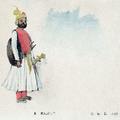Dhobi (Washerman)
Another evocative card by M.V. Dhurandhar injects personality into the roving washerman. In the background is an edifice of the "new" Bombay while in the foreground we see the age-old profession of washermen cleaning the resident's laundry.
See the

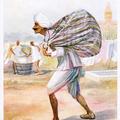

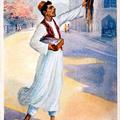
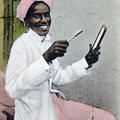


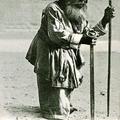
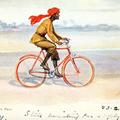
![[Karla Station] [Karla Station]](https://www.paperjewels.org/sites/default/files/styles/square_thumbnail/public/slides/karla-station_0.jpg?itok=ktTgi9Gt)
